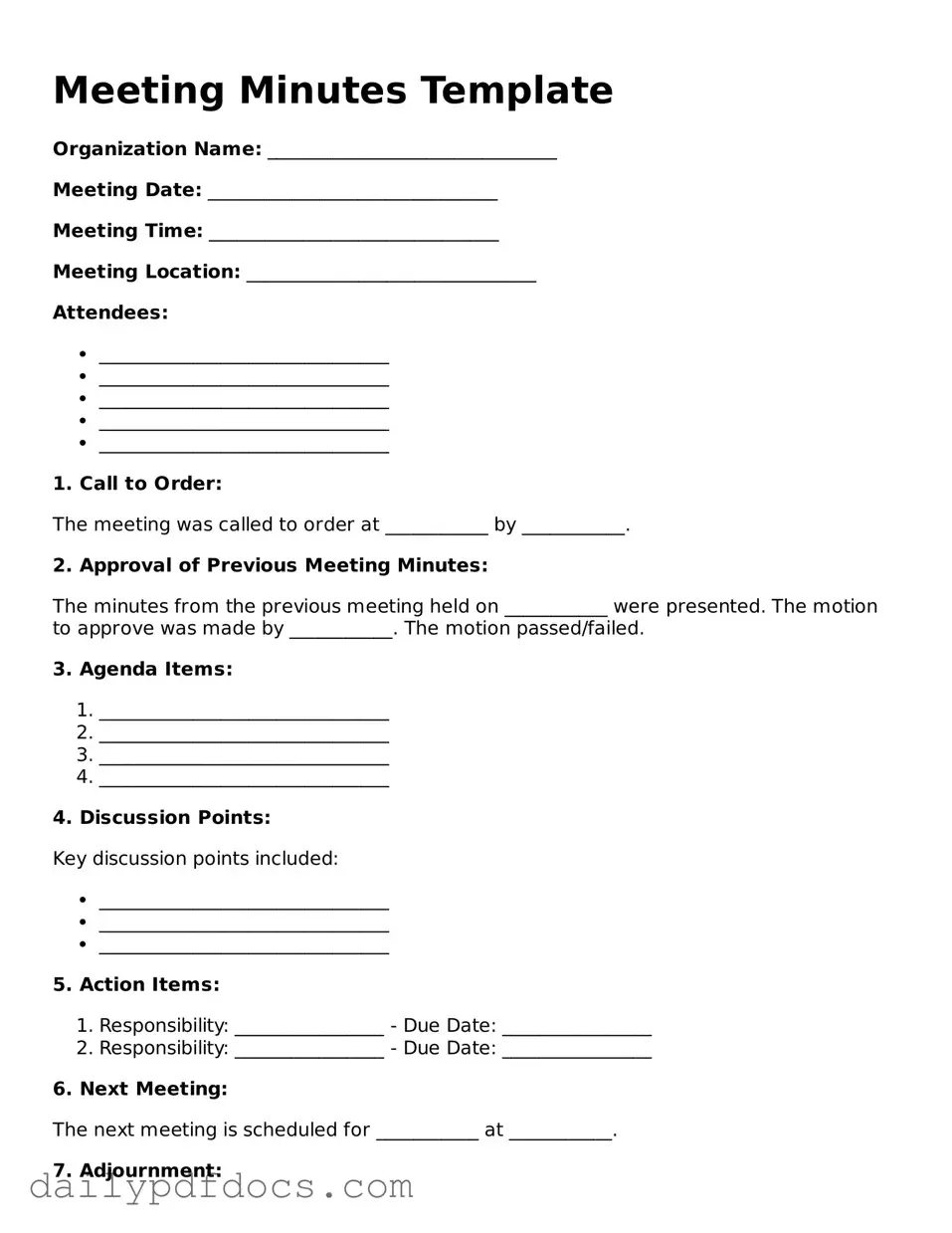What is the purpose of the Meeting Minutes form?
The Meeting Minutes form serves to document the key points discussed during a meeting. It provides a written record that can be referred to later, ensuring that all participants have a clear understanding of what was covered and any decisions made. This form is essential for accountability and transparency within any organization.
Who is responsible for filling out the Meeting Minutes form?
Typically, the responsibility of filling out the Meeting Minutes form falls to the designated secretary or note-taker of the meeting. However, anyone present can take notes and contribute to the form, as long as the information is accurate and comprehensive.
What information should be included in the Meeting Minutes form?
Key details to include are the date and time of the meeting, names of attendees, agenda items discussed, decisions made, and any action items assigned. It is also helpful to note any important discussions or comments that arose during the meeting. This ensures that all relevant information is captured for future reference.
How soon after the meeting should the Meeting Minutes be completed?
It is best practice to complete the Meeting Minutes form as soon as possible after the meeting concludes, ideally within 24 hours. This helps to ensure that the information is fresh in the minds of the note-taker and attendees, leading to more accurate and detailed records.
Can the Meeting Minutes be amended after they are distributed?
Yes, the Meeting Minutes can be amended if necessary. If errors are found or additional information needs to be added, it is important to communicate these changes to all attendees. A revised version can be circulated, ensuring that everyone has the most accurate and up-to-date information.
Are Meeting Minutes considered a legal document?
Meeting Minutes can serve as a legal document, especially in formal organizations or when decisions made during the meeting have legal implications. They can be used as evidence in disputes or to verify that certain actions were agreed upon. Therefore, it is crucial to maintain accuracy and clarity in the documentation.
How should Meeting Minutes be stored or archived?
Meeting Minutes should be stored in a secure location, whether digitally or in physical form. Digital copies can be saved on a shared drive or document management system, while physical copies should be kept in a dedicated file. It is important to ensure that these records are easily accessible for future reference while also being protected from unauthorized access.
